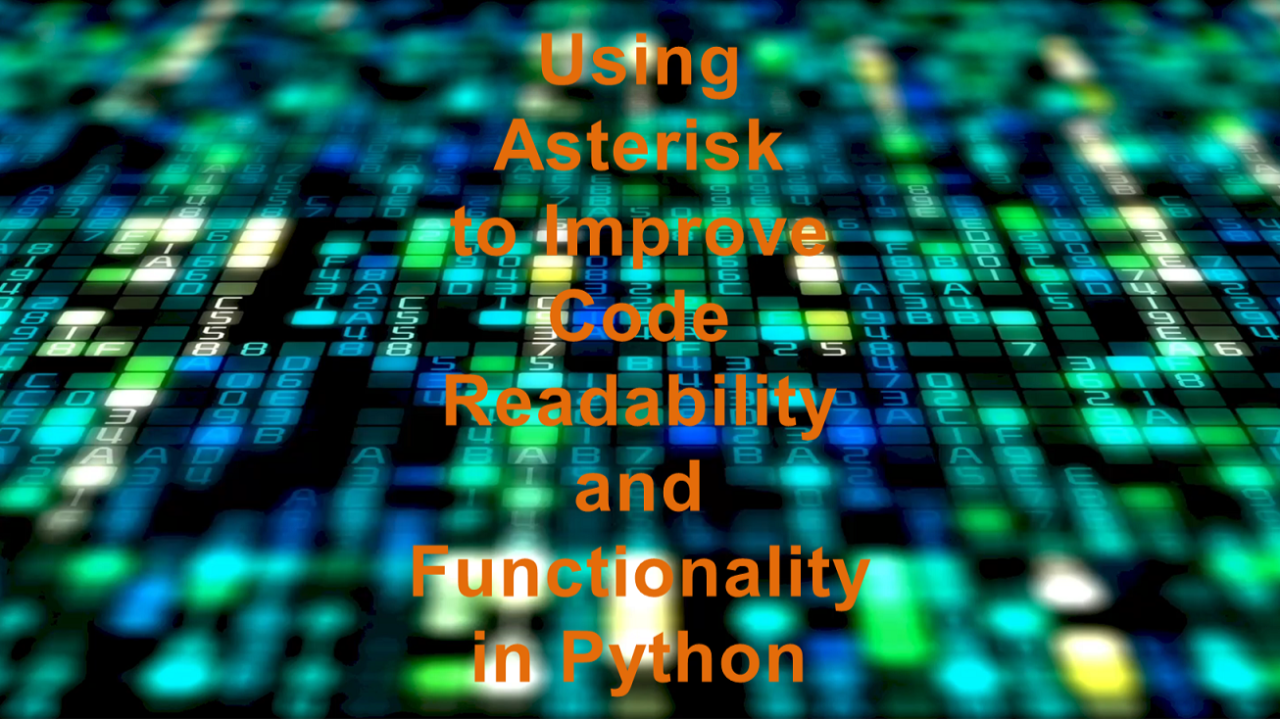
Using Asterisk to Improve Code Readability and Functionality in Python
Yamil Garcia
I'm an Electrical Software Engineer with a passion for combining my knowledge in the intricacies of electrical systems with the power of programming.
Table Of Content
Introduction
The asterisk (*) in Python is one of the most versatile operators in the language, appearing in everything from function arguments to sequence manipulation. Despite its frequent appearance, many Python developers only scratch the surface of its potential. Understanding its full range of uses can greatly enhance your ability to write concise, flexible, and readable code, especially when handling dynamic data structures and function parameters.
In this article, we will explore the various ways the asterisk can improve your Python programming. From handling variable-length arguments to unpacking complex iterables, the asterisk plays a critical role in simplifying common programming tasks. By mastering this operator, you can make your code more efficient and adaptable, leading to more maintainable and scalable software solutions.
Using the Asterisk (*) in Python
The asterisk (*) is one of Python’s most versatile symbols. It's used in different scenarios to simplify code and make it more readable. It can be used for unpacking values, defining variable-length arguments, and more. Here's a simple introduction to how it works.
Variable Length Arguments in Functions
In Python, using an asterisk (*) in function definitions allows the function to accept a variable number of positional arguments. This is useful when the exact number of arguments is unknown beforehand. The *args parameter collects all additional arguments into a tuple, enabling dynamic handling of inputs while maintaining clean and flexible code design.
Extended Iterable Unpacking
Extended iterable unpacking allows you to unpack parts of an iterable into individual variables and capture the remaining elements using the asterisk (*). This provides more flexibility when dealing with lists, tuples, or other iterables. It's especially helpful for splitting data into meaningful parts without manually indexing, improving code readability and maintainability.
Multiplying Sequences
The asterisk (*) can be used to multiply sequences, such as lists or tuples, in Python. This allows you to repeat elements of a sequence multiple times in a concise manner. It's especially useful for initializing lists with repeated values, replicating patterns, or creating placeholders in an efficient way.
This simple method allows you to create repeated patterns and values with minimal effort in various applications.
领英推荐
Keyword-Only Arguments
In Python, you can enforce keyword-only arguments by placing an asterisk (*) in the function signature. Any arguments following the asterisk must be passed by name, ensuring clarity in function calls. This technique improves readability and prevents errors caused by positional arguments, especially when dealing with multiple parameters or default values.
Ignoring Values
In Python, the asterisk (*) can be used to ignore specific values when unpacking iterables. This technique is particularly useful when you're only interested in certain parts of a sequence and want to discard the rest. It helps in keeping your code cleaner and more readable by signaling that some values are intentionally unused. In these examples, underscores (_) are used to ignore specific values while unpacking. This approach makes it explicit that those values are unnecessary for the task at hand.
Merging Dictionaries
In Python, the double asterisk (**), can merge multiple dictionaries into one. This technique simplifies combining dictionaries by unpacking their key-value pairs into a new dictionary. It's especially useful when working with configurations or aggregating data from multiple sources, making the code cleaner and more concise. This technique simplifies the process of merging dictionaries, making it efficient to handle configurations and data from multiple sources, with the latter dictionary’s values overwriting any conflicting keys.
Unpacking Arguments
In Python, you can use the asterisk (*) and double asterisk (**) to unpack elements from iterables or dictionaries when passing them as function arguments. This technique allows you to pass an arbitrary number of positional or keyword arguments dynamically, making your code more flexible and simplifying function calls. Unpacking arguments simplifies function calls, especially when dealing with lists, tuples, or dictionaries, making the code cleaner and more dynamic.
Matrix Transposition
Matrix transposition involves flipping rows into columns and vice versa. In Python, you can efficiently transpose a matrix using the asterisk (*) operator to unpack the rows into the zip() function. This approach is concise, readable, and avoids the need for nested loops, making matrix manipulation simpler in various numerical and data processing applications.
This technique simplifies matrix transposition using zip(*matrix), turning rows into columns efficiently without complex loops, making it a great tool for data manipulation.
Additional Resources
Mastering the asterisk and its versatile applications in Python is a key skill that can enhance your coding efficiency. To dive deeper into advanced uses and explore other related Python functionalities, here are some additional resources that provide in-depth tutorials and documentation. These materials will help you continue improving your Python proficiency.